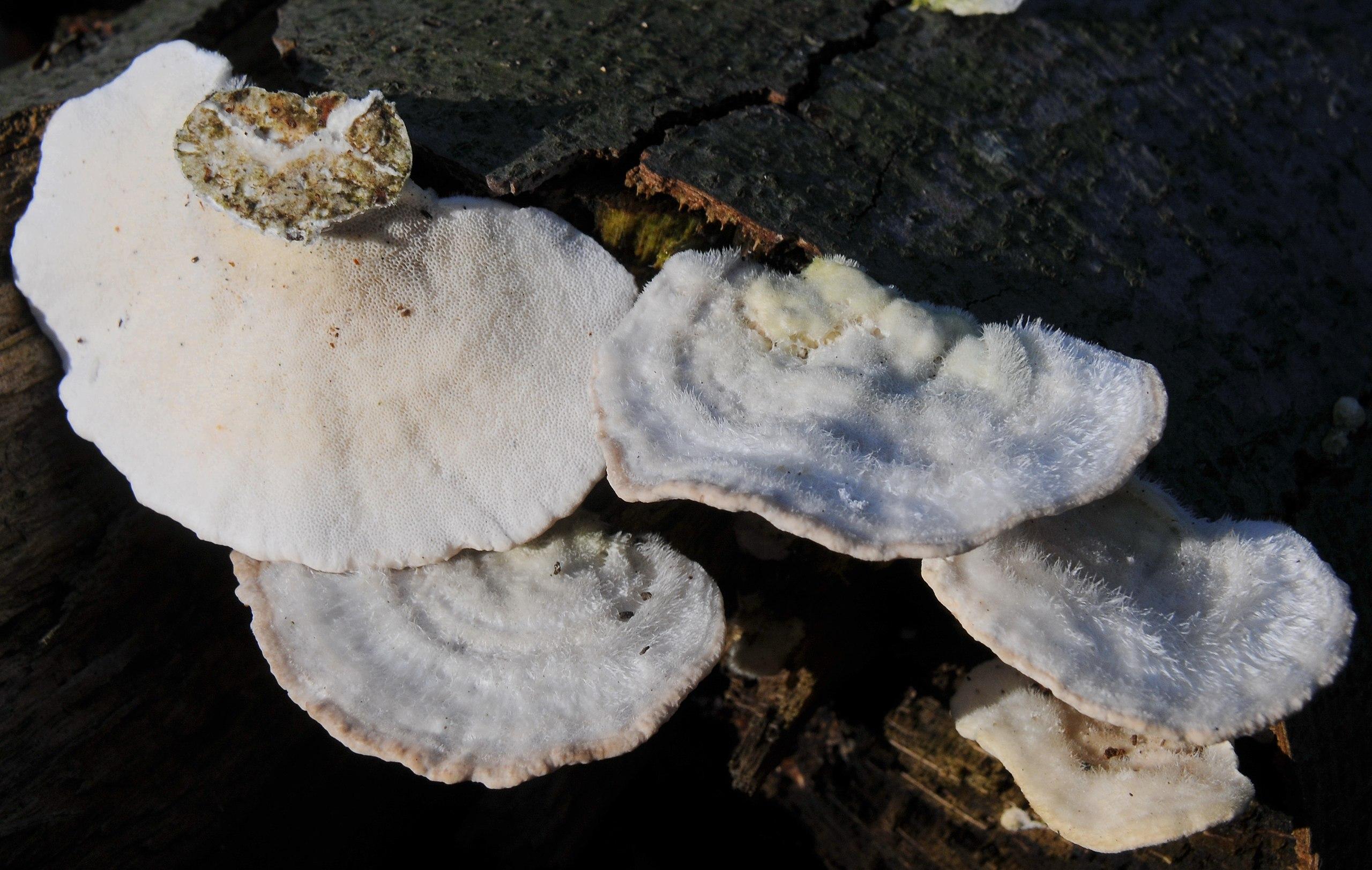
Hairy turkey tail
Trametes hirsuta
What is The hairy turkey tail (Trametes hirsuta)?
Trametes hirsuta, also known as the hairy turkey tail or hairy bracket, is a widespread saprobic mushroom. Thriving on numerous hardwood and conifer tree species, it acts as a saprotrophic organism, breaking down dead wood to acquire nutrients for its growth and contributing to forest regeneration. This fungus causes white rot and typically forms clusters on logs and stumps during summer and fall. Its semicircular cap, up to 10 cm in diameter and 6 cm deep, displays a densely hairy surface with radial furrows, varying shades of gray, whitish, and brownish colors, and a typically brownish to blackish margin.
How does The hairy turkey tail (Trametes hirsuta) occur?
Trametes hirsuta reproduces through the production and dispersal of spores (basidia). Spores are released from the pore surface of the mushroom and dispersed by various means such as air currents, rain, or physical disturbances. When conditions are favorable, spores germinate and form mycelium, which colonizes and decomposes deadwood through enzymatic activity. Under suitable conditions, a fruiting body (mushroom) develops, producing more spores to continue the reproductive cycle.
Symptoms
1 - Wood Decay and Nutrient Cycling
• Trametes hirsuta decomposes deadwood, aiding in wood decay. This process releases stored nutrients, contributing to nutrient cycling in the ecosystem. • Colonization of deadwood by Trametes hirsuta creates habitats for other organisms. • Decay and crevices provide shelter and food sources, increasing biodiversity.
2 - Soil Enrichment
• Decomposition of deadwood by Trametes hirsuta enriches the soil. Organic matter breakdown adds nutrients and compounds, improving soil fertility. • Trametes hirsuta's role in wood decay participates in carbon cycling. Deadwood decomposition releases carbon back into the atmosphere or soil.
Solutions
1 - Cultural Control
1. Regular Inspection: Inspect trees and wood structures for early signs of Trametes hirsuta. 2. Pruning and Removal: Remove dead or decaying branches and trees promptly. 3. Maintain Tree Health: Properly care for trees with watering, fertilization, and pruning. 4. Ensure Drainage: Prevent excessive moisture by ensuring proper drainage. 5. Promote Air Circulation: Avoid overcrowding and maintain adequate spacing.
2 - Chemical Control
There are several fungicides available, such as copper-based, borate-based, thiabendazole, and propiconazole, that can be used to control wood-decaying fungi like Trametes hirsuta. Follow the instructions provided by the manufacturer and consult professionals for specific recommendations and proper usage.
